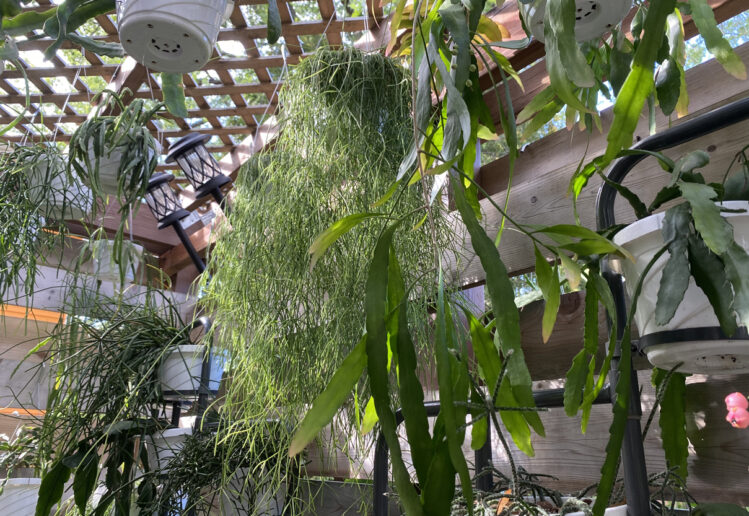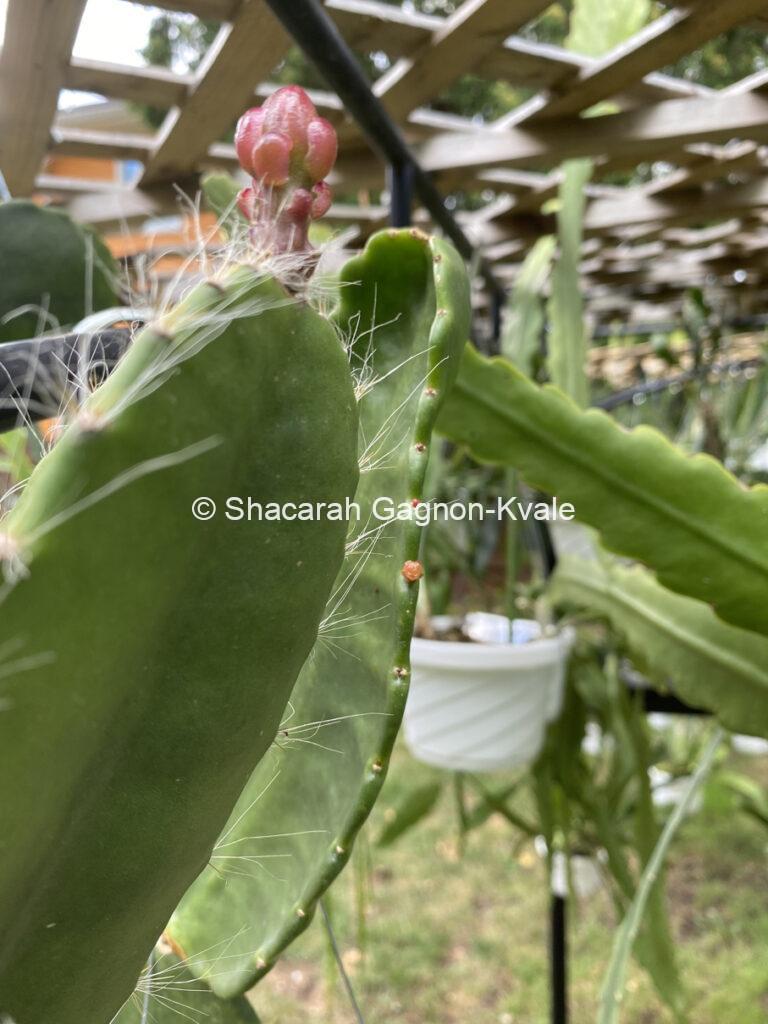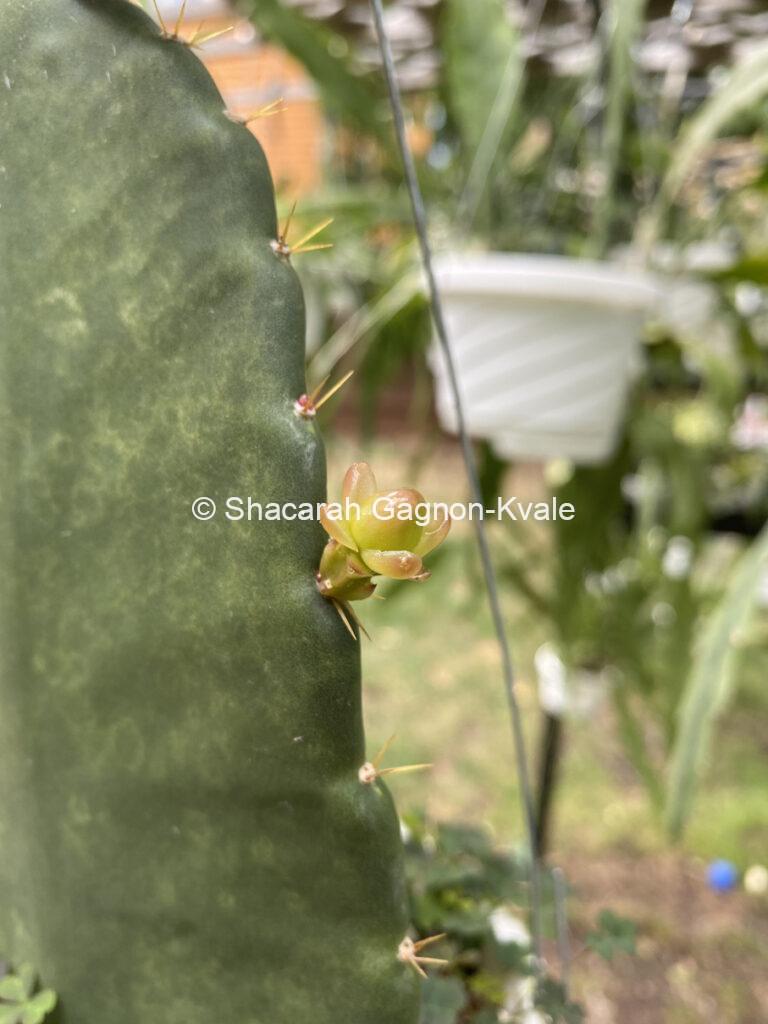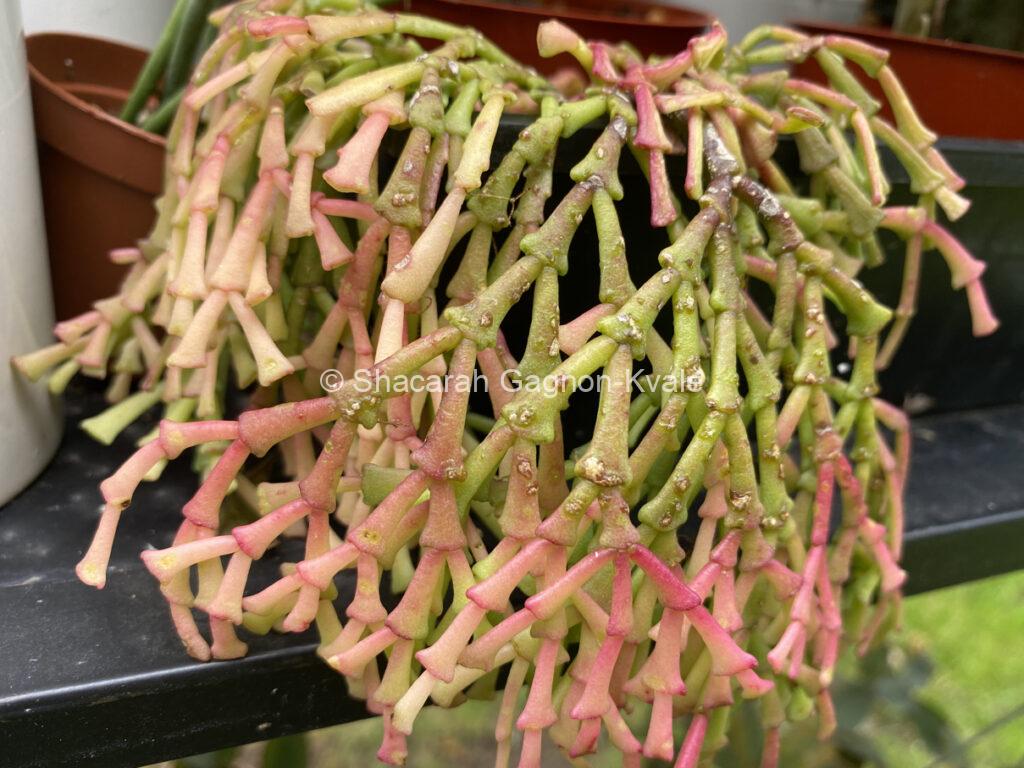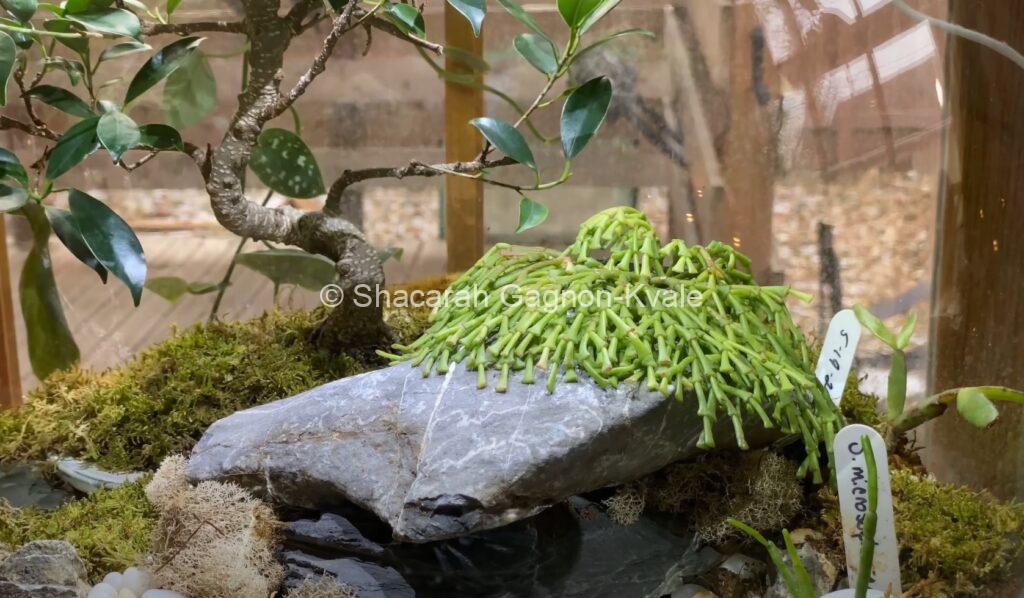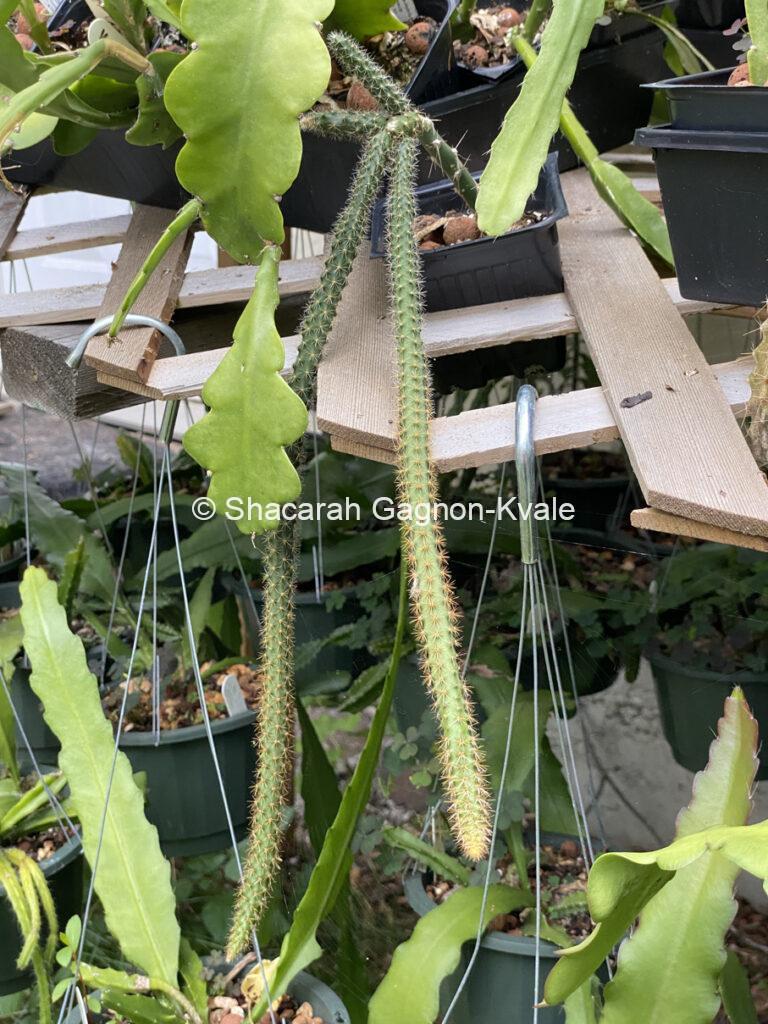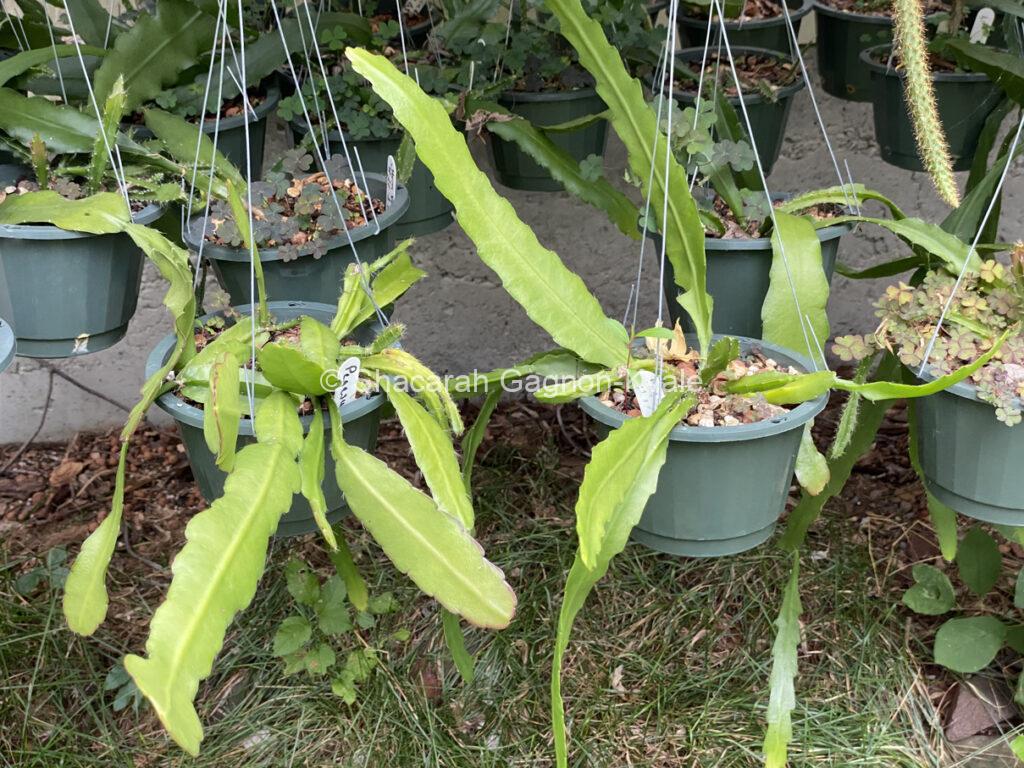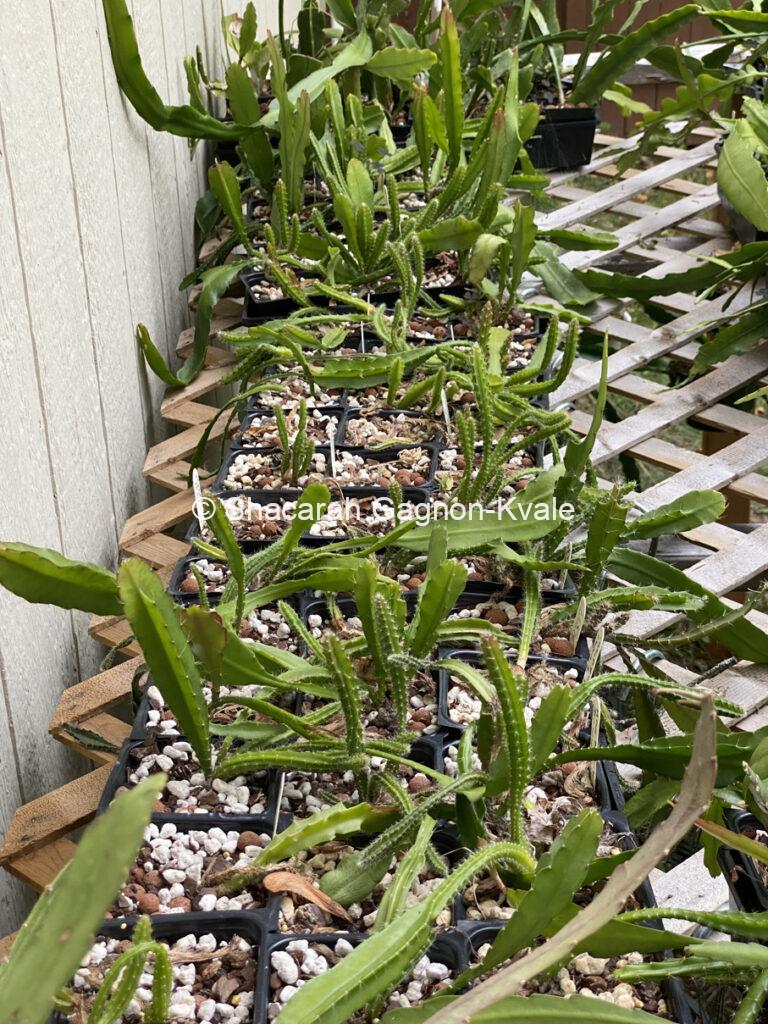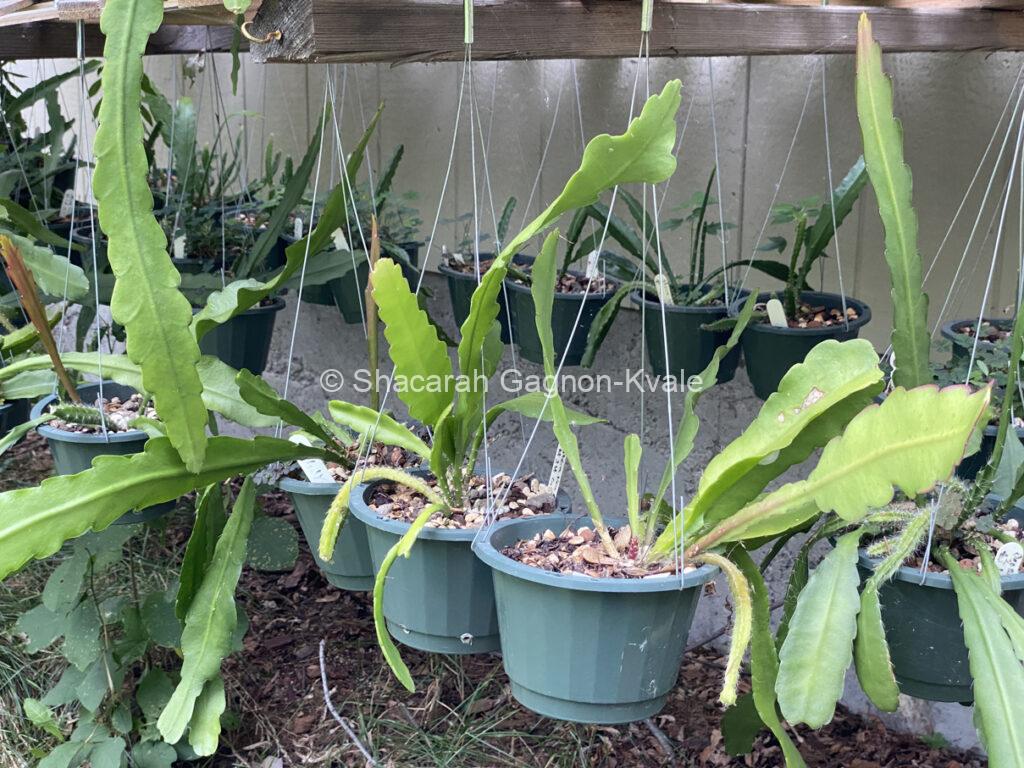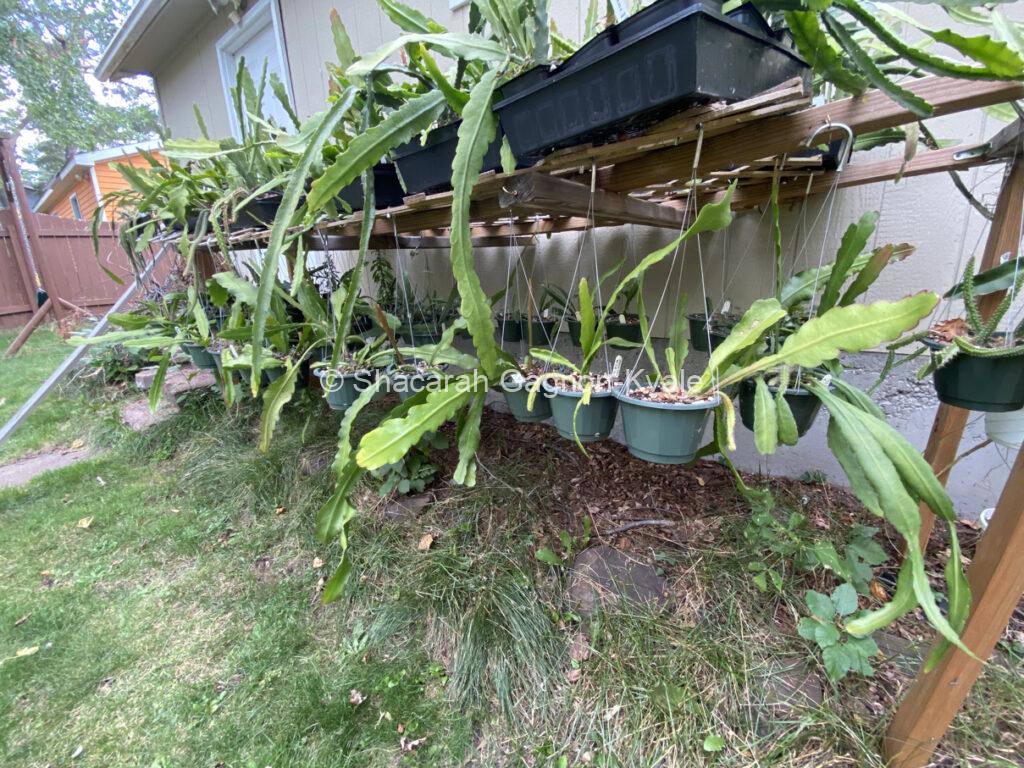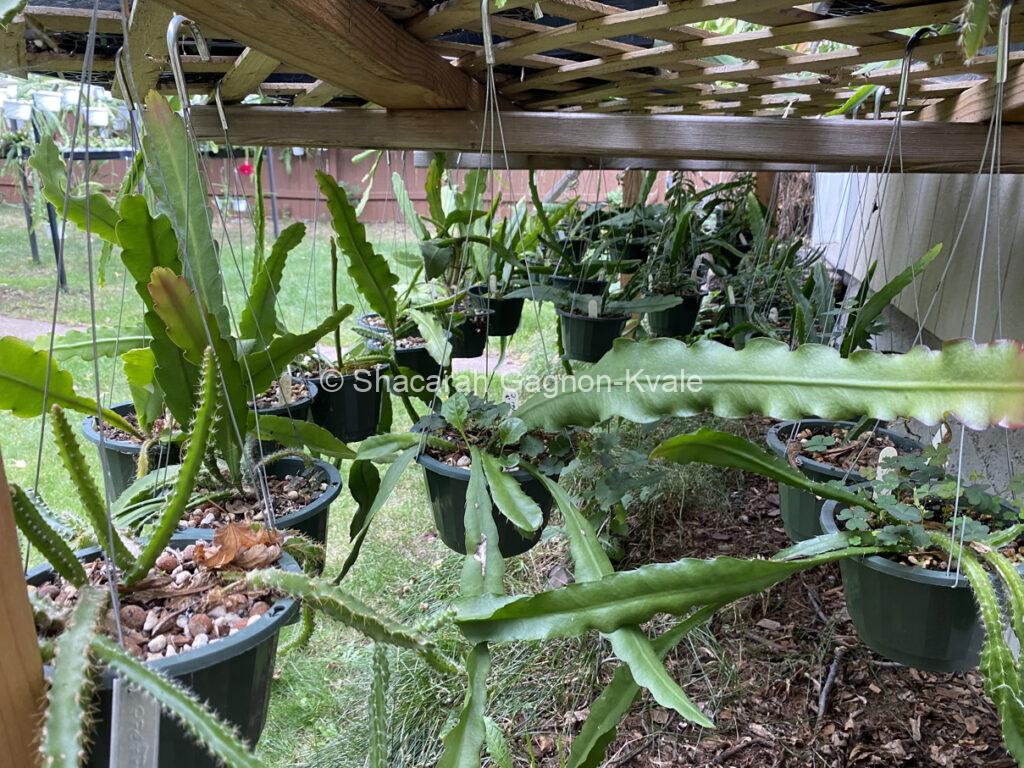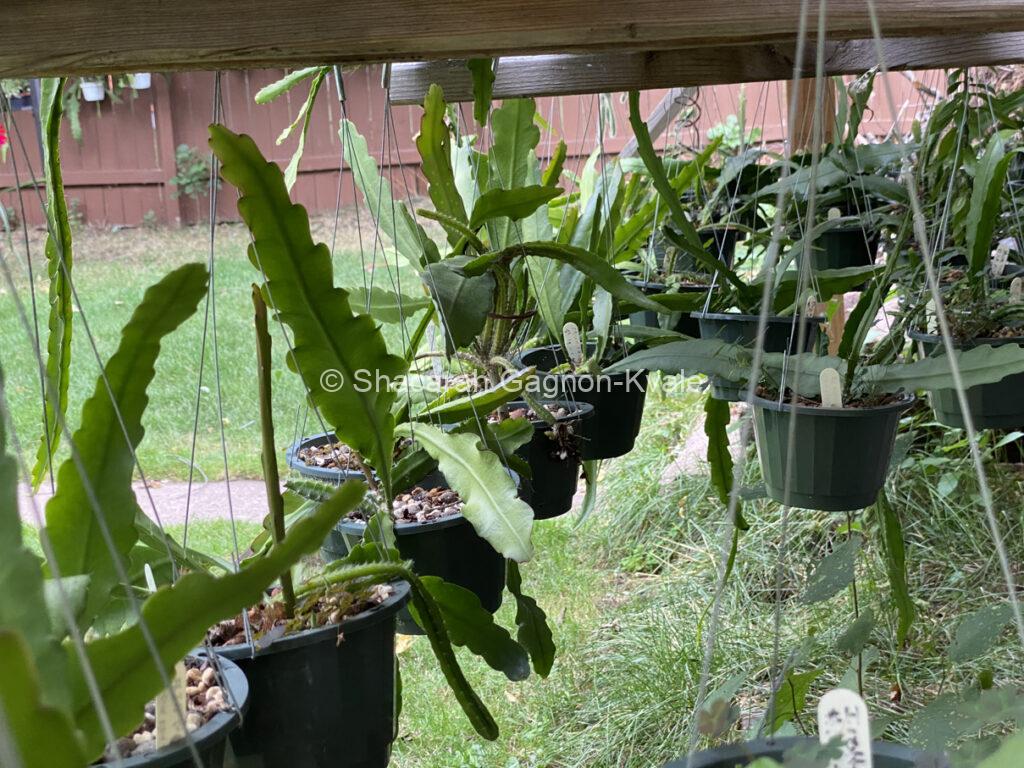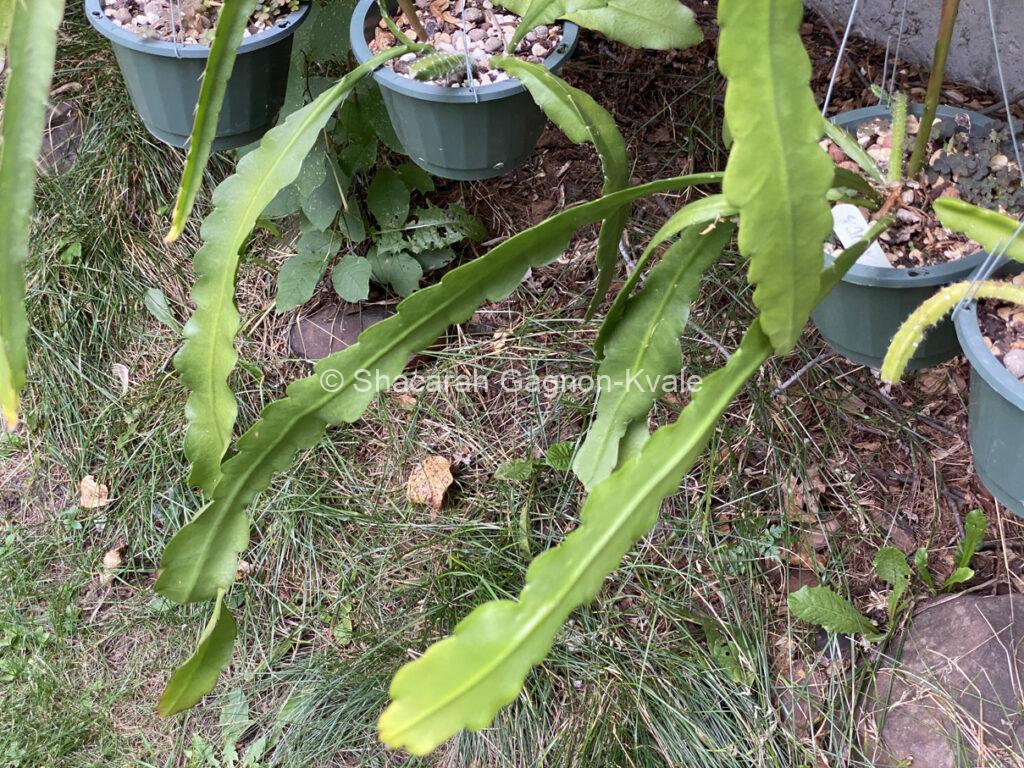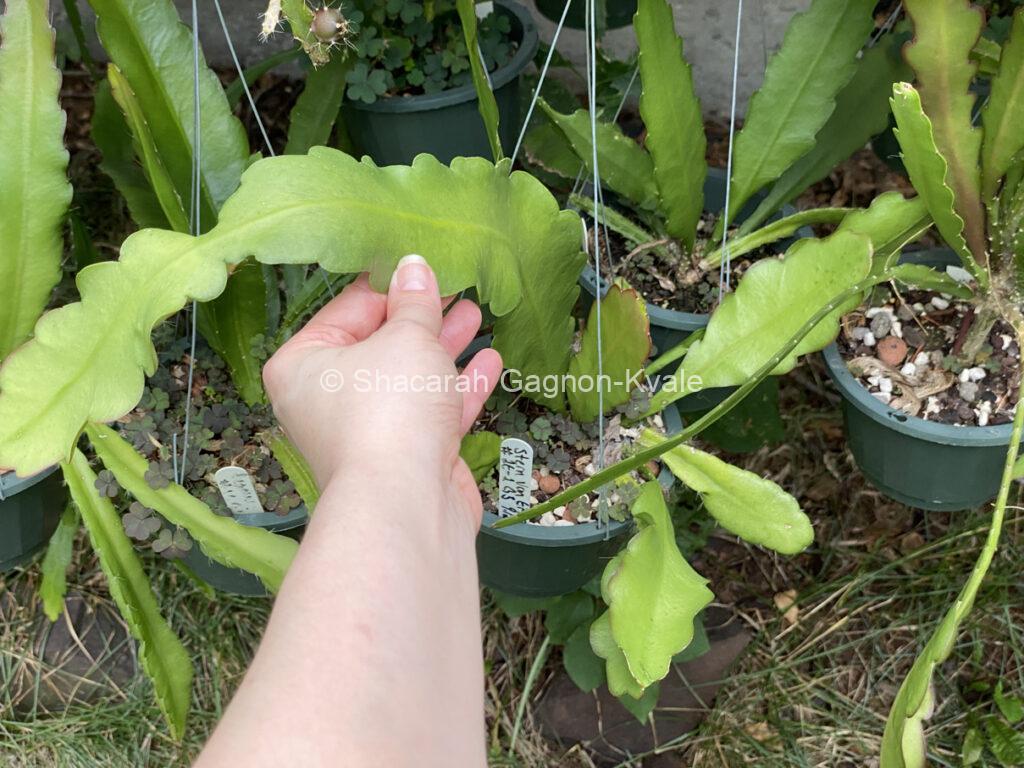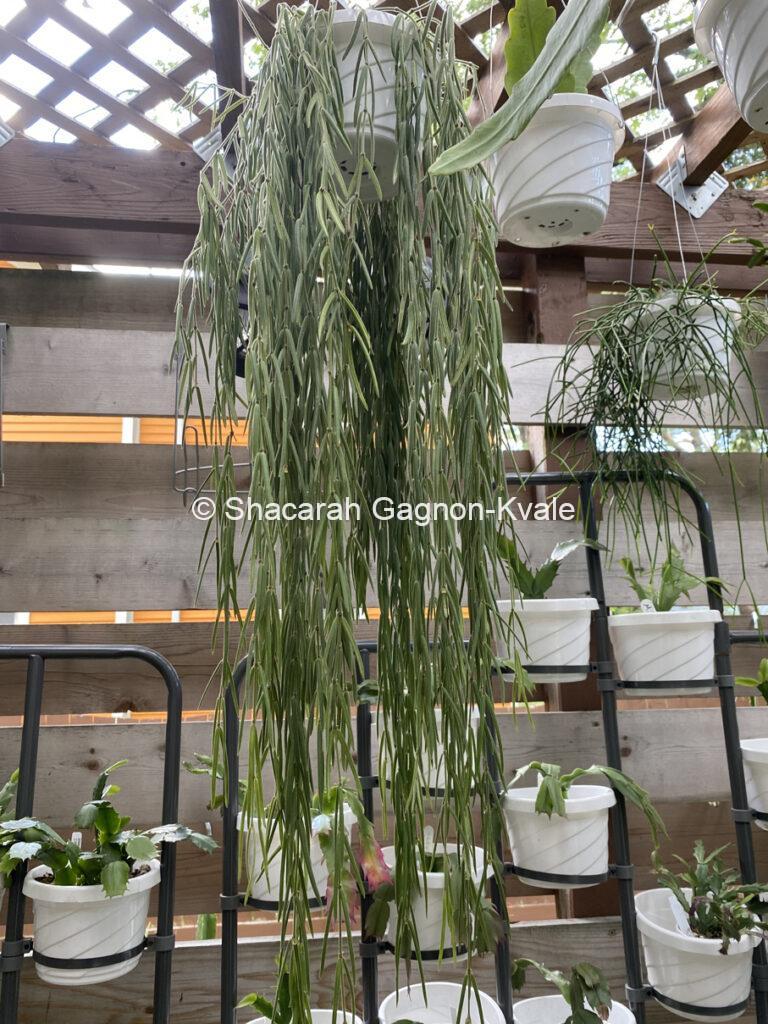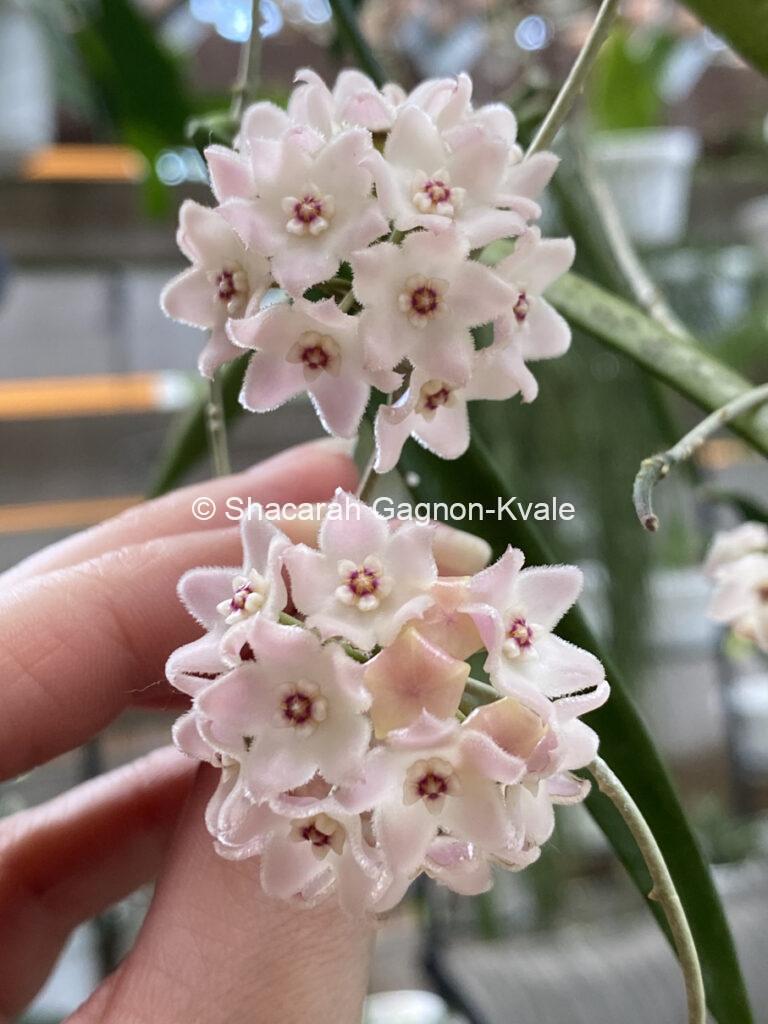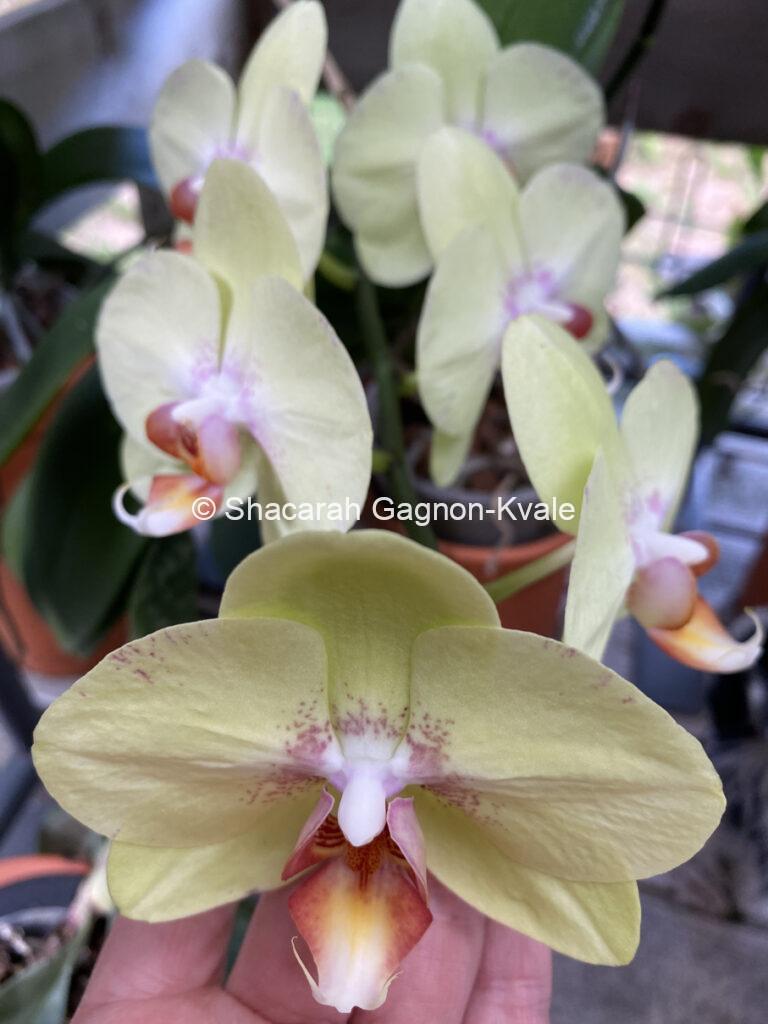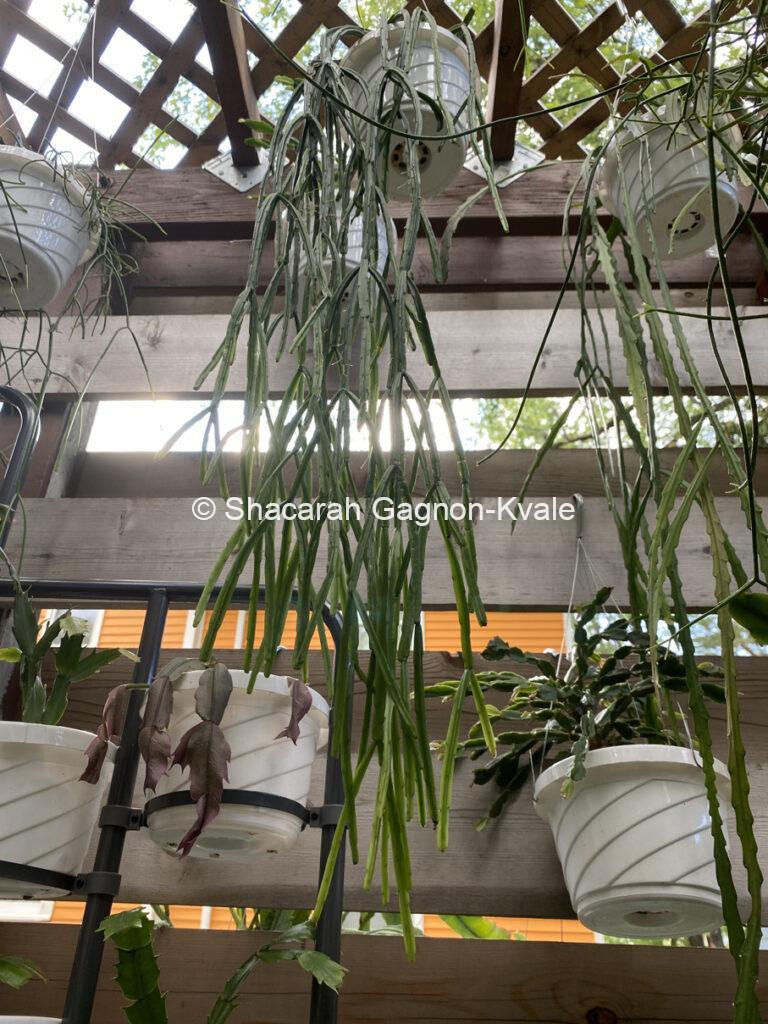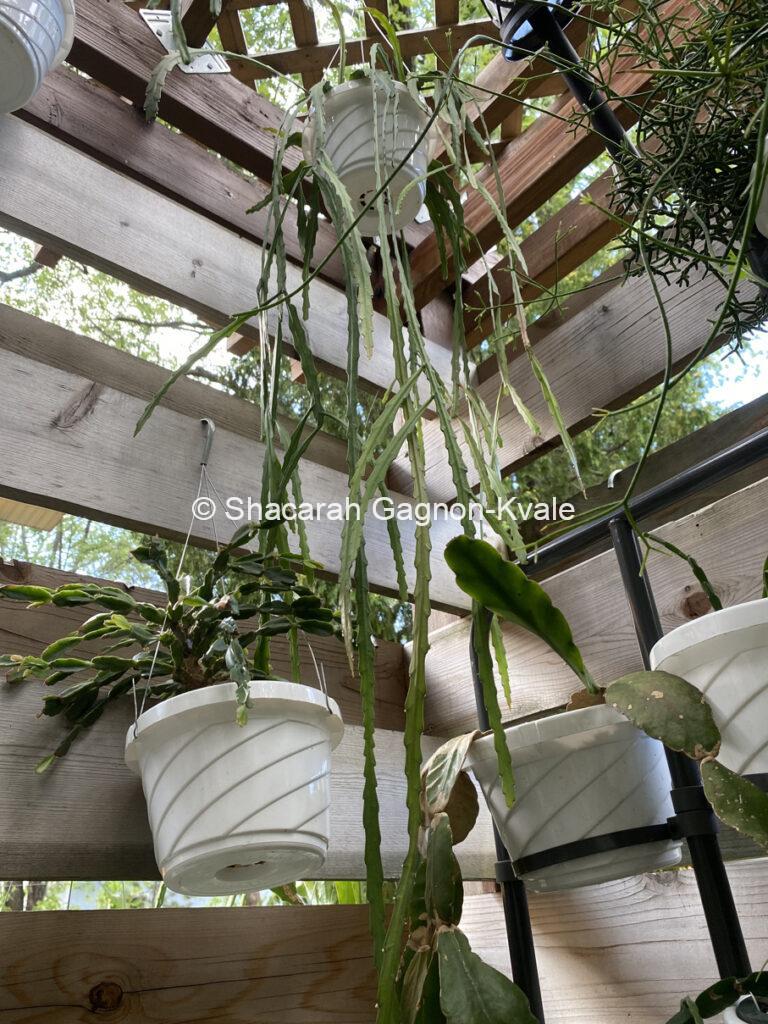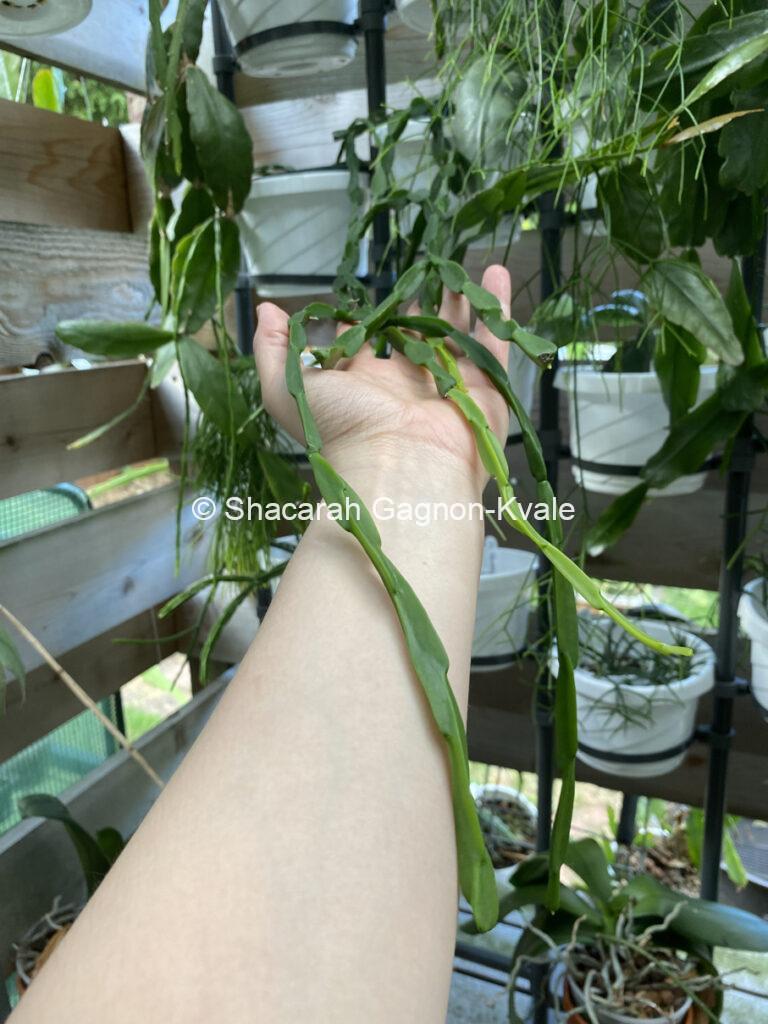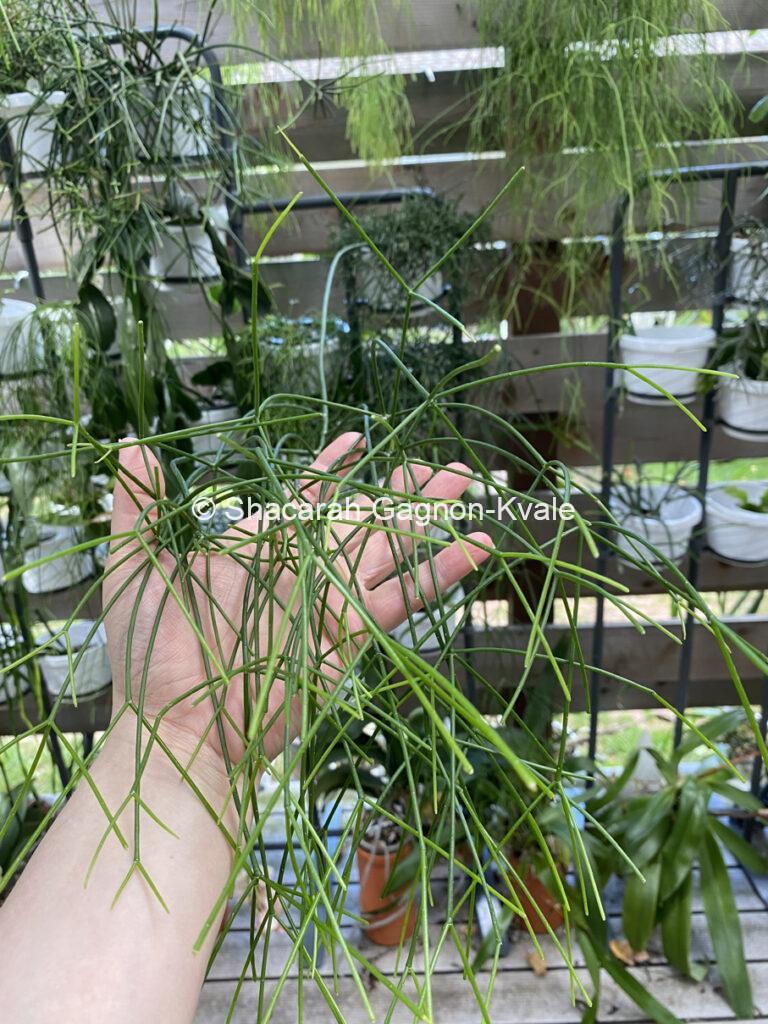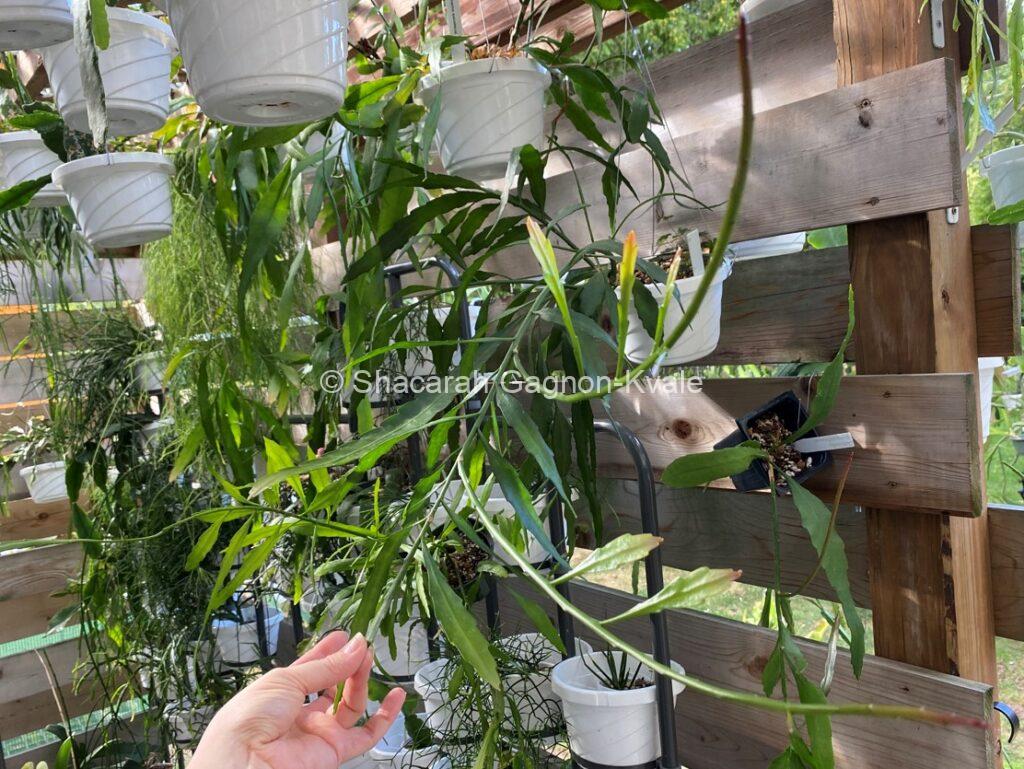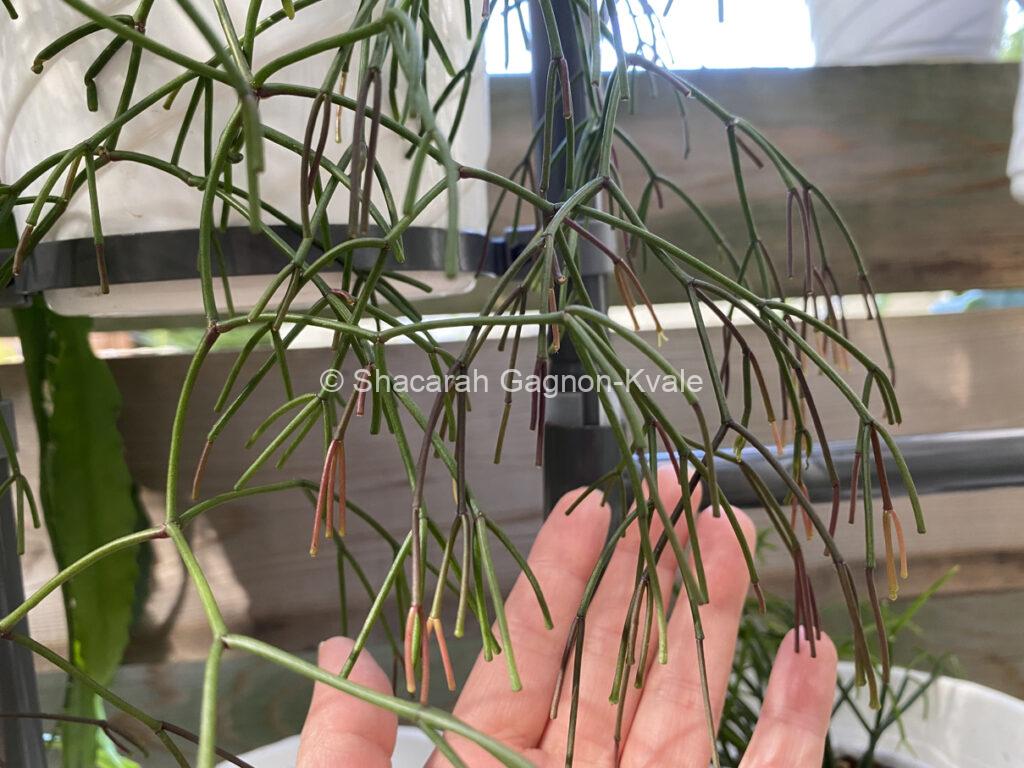Looks like Weberocereus bradei has a fruit forming! I tried to pollinate it with Weberocereus frohningiorum, but I’m not sure if it’s self-fertile, either way, that is exciting.
Sadly W. frohningiorum’s pollination from W. bradei did not take.
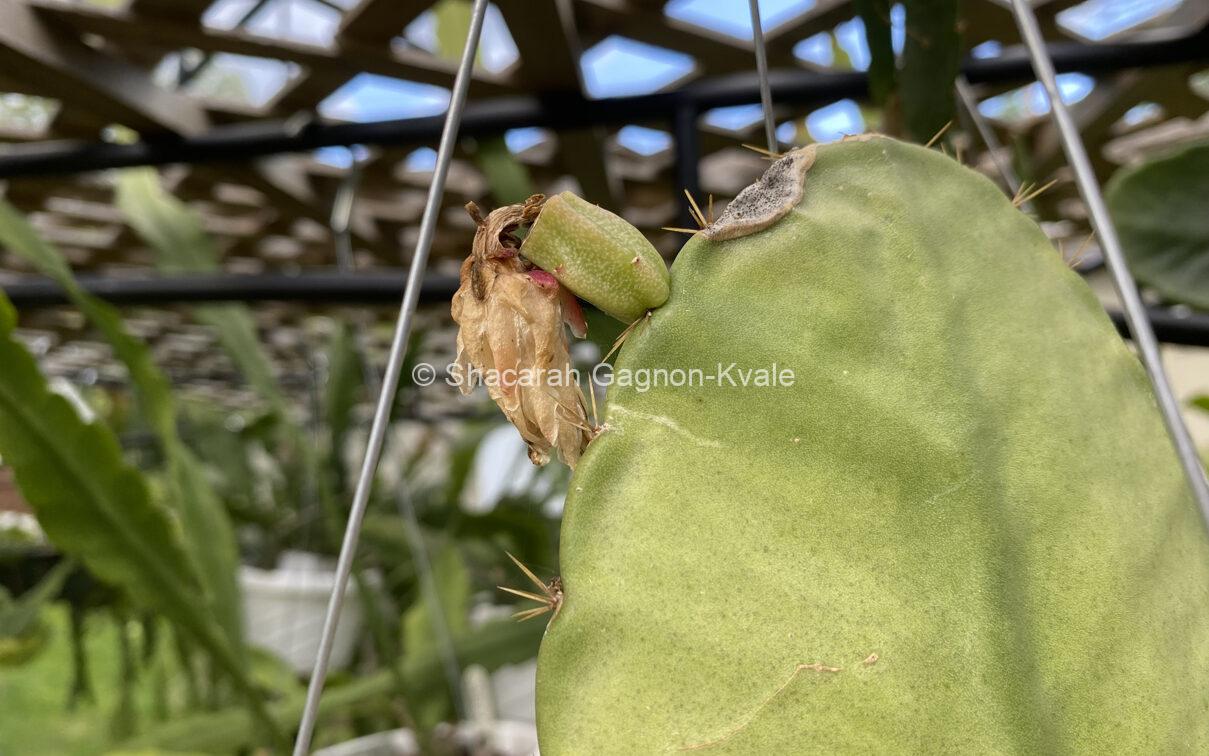
There are more Weberocereus flowers to come, fingers crossed I get lucky and manage to also pollinate W. frohningiorum. This poor W. bradei if you look closely at the branch the mottling looks like it has ringspot virus.
I’ve never shown this Weberocerus species and it’s a very tiny specimen. I started it from the smallest of cuttings 2 years ago I think. It was extremely difficult to find. I believe this one is Weberocereus tunilla subspecies biolleyi.
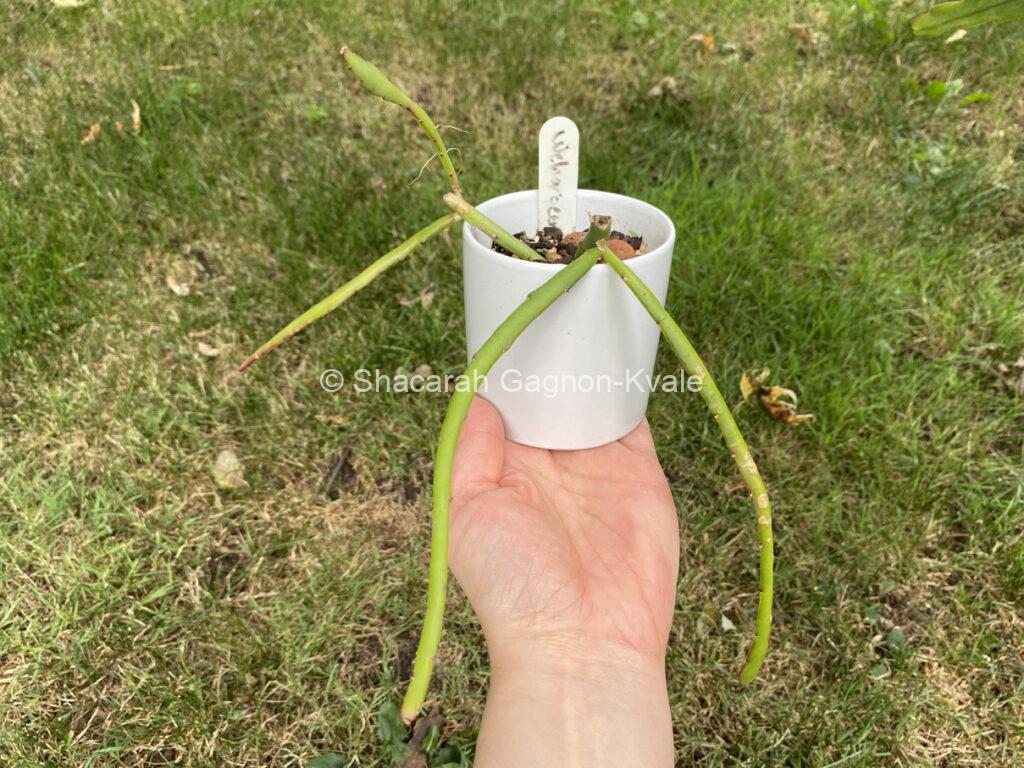
Schlumbergera lutea subsp. bradei has been moved out of the biOrb to the great outdoors. Sadly, it started to drop clades, so I think this plant in a terrarium might not be ideal. It’s so beautiful when the clades turn reddish from the sun though.
Here is a crazy but beautiful nest of a few Selenicereus species and an Aporocactus species. Selenicereus loves to put out intense nests of aerial roots. I can’t imagine how gorgeous that must look in the wild.
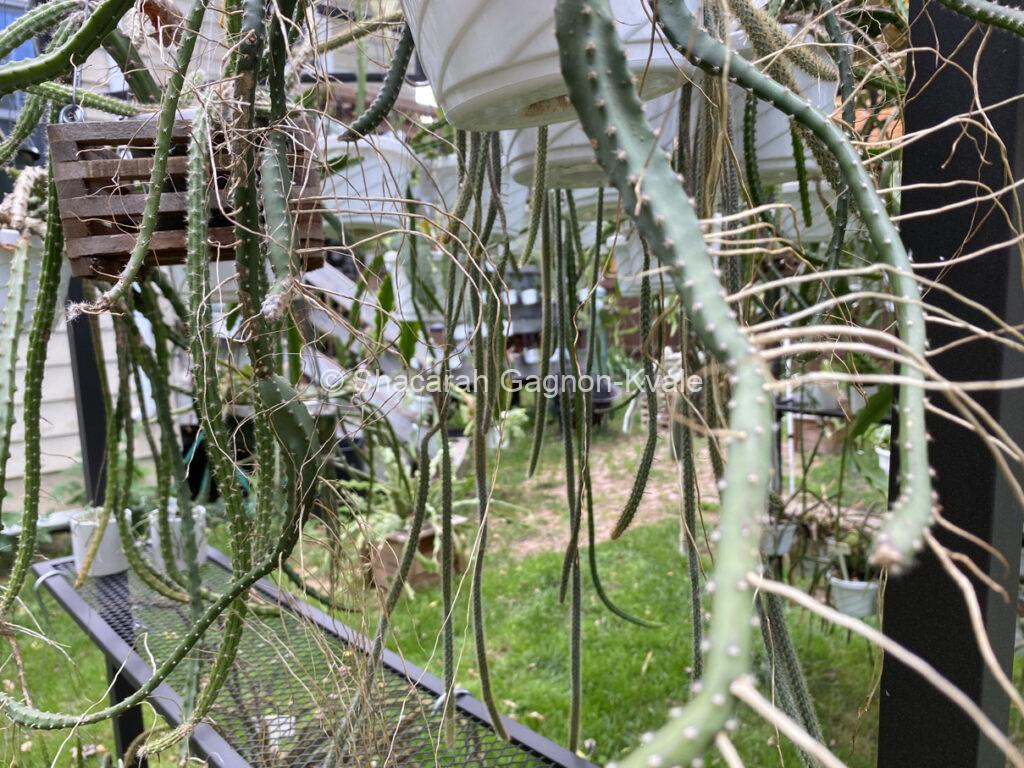
My curious unknown Aporocactus species that I “stab” grafted onto Pereskiopsis is doing ok.
My Disocactus hybrid seedlings are all doing things. The ones I transplanted last year into larger pots are doing fantastic! They actually look like real Disocactus hybrid plants! Unfortunately, I also have Oxalis growing in all my pots.
I grow a few other types of epiphytic plants as well. Mostly Hoya and orchids. Here is a gorgeous Hoya linearis, blooms from Hoya shepherdii (I hate this plant), and a Phalaenopsis hybrid.
Everybody is growing but especially the Rhipsalis and Pfeiffera. Here is a beautiful unknown Rhipsalis and Pfeiffera asuntapatensis.
Rhipsails paradoxa and what I believe is Rhipsalis teres forma prismatica. R. teres f. prismatica has all these long, long branches with growth completely different from its normal somewhat short angular growth. It’s bizarre and lovely.
Ripe berries on Pfeiffera monacantha, they are pink when they ripen! I usually see this plant with orange unripe berries and wasn’t sure what they would do when ripe.
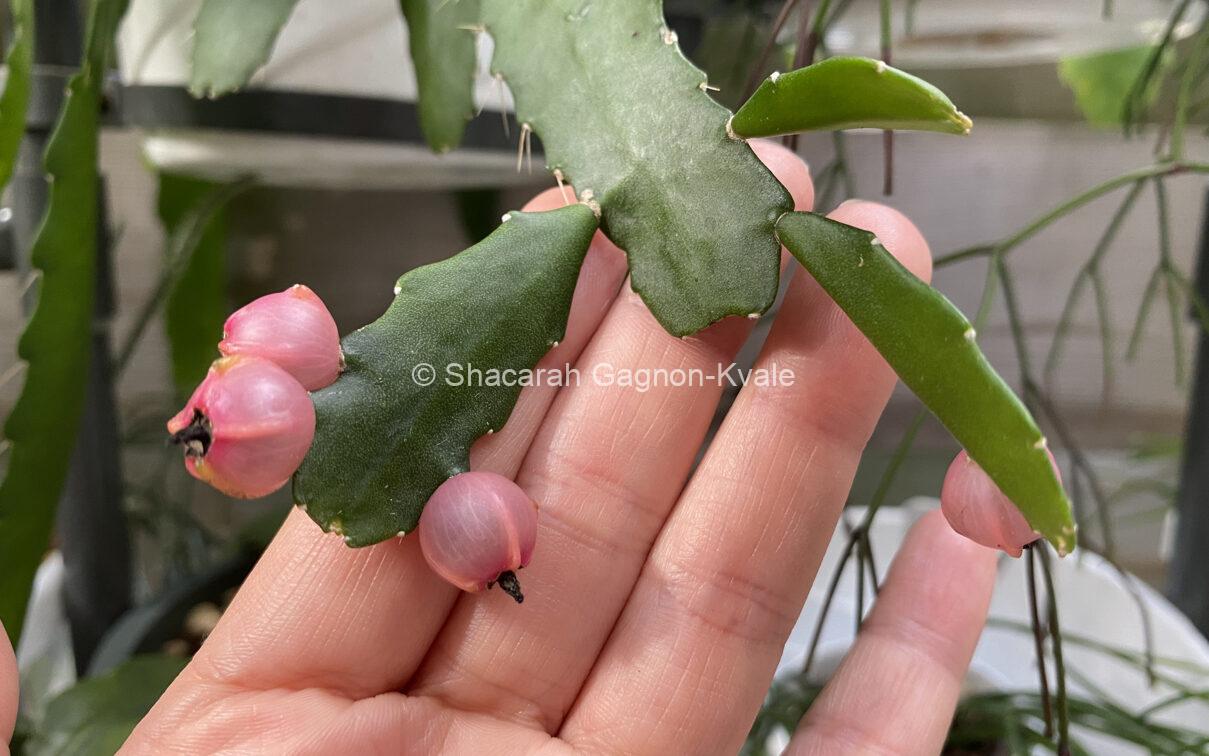
Lastly, an unconfirmed Disocactus nelsonii growing beautifully and an unknown Rhipsalis that always has beautiful red-tinged branches.
